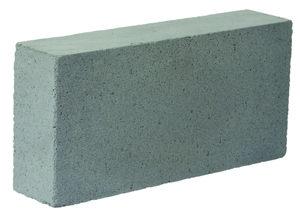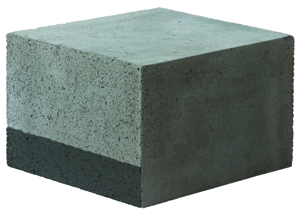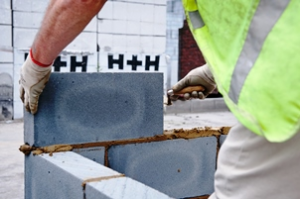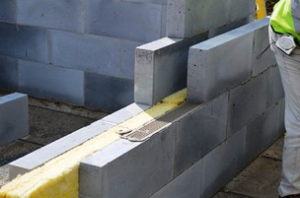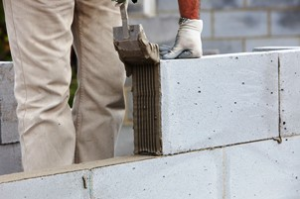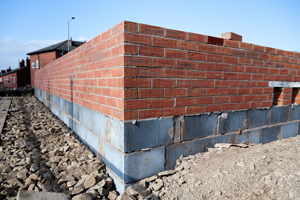H+H UK LTD
Suppliers of: Celcon concrete blocks lightweight concrete blocks concrete thin joint system
H+H UK LTD manufacture a wide range of Concrete Blocks and lightweight Concrete Blocks to suite all types on Block Construction.
Useful Resources:
- BIM files available on BPi
- Social Media: LinkedIn / Twitter / YouTube / Facebook
- H+H Academy: Online training and resources Click here
H+H is the UK’s largest manufacturer of aircrete products. We manufacture the market leading range of Celcon Blocks, including Foundation Blocks, Plus Blocks and the H+H range of aircrete products.
H+H aircrete products offer a complete building material that meets the requirements of the Building Regulations, with the flexibility to offer solutions to hospitals, schools, offices, industrial warehouses and housing (social and private).
Used in partition, separating and external walls (solid or cavity), firewalls and as an infill to framed construction, our products provide durability and fire resistance as well as superb thermal and sound insulation.
Main Product Ranges:
Celcon Blocks
Celcon Blocks in Solar, Standard, High Strength and Super Strength Grades are the most commonly used aircrete block in the H+H range. All Celcon Blocks are BBA certified, are fire resistant (100mm walls, up to 4 hours, 2 hours if loadbearing) and have been classified 0 surface spread of flame and non-combustible to Class A1 (the highest class).
Celcon Block Solar Grade
Celcon Blocks Solar Grade is principally used where enhanced thermal performance is required. With superior thermal conductivity Solar Grade Celcon Blocks are suitably loadbearing for two storey buildings and can be used below DPC.
Celcon Block Standard Grade
Celcon Blocks Standard Grade is BBA certified and has a compressive strength of 3.6N/mm2. Due to its all round performance, it is possible for a 100mm Standard grade Celcon Block to be used throughout a build, eliminating on-site confusion.
Celcon Block High Strength & Super Strength Grade
H+H’s Celcon Blocks High Strength Grade (7.3N/mm2) and Super Strength Grade (8.7N/mm2) are used principally where higher compressive strengths are required such as in the foundations and lower storeys of three storey buildings, piers under high vertical loads and in multi-storey buildings.
Celcon Plus Blocks
Celcon Plus Blocks are an alternative to the 440 x 215mm face format block and are suitable for the same applications. They are longer at 630mm long and come in a variety of thicknesses.
Celcon Foundation Blocks
Available in Standard Grade (3.6N/mm²) and High Strength Grade (7.3N/mm²), Foundation Blocks can be used to support 3 storey constructions. They are suitable for the support of solid or cavity walls, framed construction or suspended floors, including beam and block.
Jumbo Bloks
Jumbo Bloks are produced with the latest technology, offering a high degree of dimensional accuracy with sharp arises, which make them ideal for use with Celfix mortar.
Celcon Block Coursing Units
Coursing Units are produced from the same material as all H+H aircrete and are suitable for the same applications as conventional size Celcon Blocks, allowing consistency within the building fabric.
Celfix Mortar
Celfix Mortar is cement based and supplied as a dry, pre-mixed powder in 25kg bags. It has been designed to replace the traditional sand:cement mortar and is used with building with our Thin-Joint System. Celfix Mortar starts to set within 10 minutes of application and approaches full design strength in just 1 to 2 hours.
H+H SUSTAINABLE BUILDING WITH MASONRY
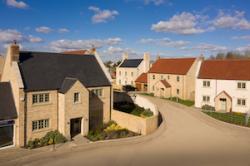 Jenny Smith-Andrews, Head of Marketing at aircrete specialist H+H UK Ltd outlines the sustainability arguments for masonry buildings
Jenny Smith-Andrews, Head of Marketing at aircrete specialist H+H UK Ltd outlines the sustainability arguments for masonry buildings
H+H has always seen itself as a manufacturer that supports sustainable building – but over time, the definition of the term and priorities for the building industry have shifted. It is good therefore to see some consensus emerging on the objectives for sustainability and how each industry can meet them. H+H supports the principles set out in the UN Sustainability goals and is committed to supporting this agenda.
Reducing carbon
The first, and increasingly urgent, priority is to reduce carbon emissions. When it comes to housebuilding that means a focus on reducing the energy demand of our homes. Home heating alone contributes around 19% of the total CO2 produced in England each year so it is logical that building regulations and the Future Homes Standard are looking to increase further the thermal efficiency of new buildings.
Aircrete has a part to play in this agenda. With its inherent thermal efficiency and very effective airtightness, the material has always been a good choice for energy efficient homes. In fact, H+H was involved well over a decade ago in the development of prototype zero carbon homes.
More recently, aircrete has been used as the foundation of low energy homes for social housing schemes where fuel costs are a primary concern and Passivhaus designs offer a practical solution.
When it comes to revisions to Building Regulations Part L, aircrete is well suited to the newer, more stringent standards and a familiar cavity wall construction will meet all the revisions currently planned.
Operational zero carbon is only one part of the story, however, and attention is increasingly focused on embodied carbon. Moving to net zero manufacturing is challenging and requires the whole supply chain to be working to the same goal.
H+H has published its roadmap to zero carbon, outlining a journey that will decarbonise its manufacturing and transport processes. However, even in this objective there can be a degree of interpretation and different measurement techniques.
Our response is to use robust lifecycle analysis methods including all the manufacturing, in use and post-use phases of construction. It is essential to develop commonly agreed standards for calculation to provide a level playing field and ensure that all manufacturers are basing their claims on equivalent data sets.
In its planned journey to zero carbon by 2050, H+H is relying on science-based targets to provide a benchmark against which to measure progress.
Low carbon construction is the focus at the moment, but at the same time, lifespan and resilience of new homes must form part of a sustainability strategy.
There is little point in reducing manufacturing carbon if the resulting building only lasts for a few decades and then needs to be entirely replaced. There is an increasingly significant school of thought suggesting that the most sustainable building is one that will last a very, very long time.
And during its lifetime, the building will need to withstand the extremes of a changing climate. In its June 2021 Assessment of UK Climate Risk, the Committee for Climate change cited overheating and flooding as the two most significant risks for the housing sector.
H+H would point to the 150-year lifespan, inherent resilience and thermal mass characteristics of aircrete to further support its position as a material with a secure future in modern, sustainable housing.
For further information on H+H, its products and its sustainability criteria, go to www.hhcelcon.co.uk
H+H - Placemaking is here to stay – at last
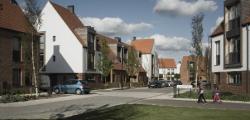 Since the release of the Building Better, Building Beautiful Commission report, ‘Living with beauty’, the concept of placemaking has been in the limelight for residential developments. Whether it’s tree-lined streets, accessible and well-maintained parks and open spaces, or areas that facilitate safe recreational activities, placemaking transforms a residential development into a community.
Since the release of the Building Better, Building Beautiful Commission report, ‘Living with beauty’, the concept of placemaking has been in the limelight for residential developments. Whether it’s tree-lined streets, accessible and well-maintained parks and open spaces, or areas that facilitate safe recreational activities, placemaking transforms a residential development into a community.
Placemaking demands the reimagination and reinvention of public spaces to become the heart of every community. Furthermore, placemaking strategies and projects are understood to be important contributors toward improving a community’s health and wellbeing.
H+H has supported the concept of placemaking for a long time, with developments such as Cameron Close, which was designed to Passivhaus standards while ensuring that no views were obscured by the houses built. Similarly, Derwenthorpe was developed to create a sustainable and vibrant community where nature and community thrive alongside one another.
In fact, we believe that effective placemaking doesn’t just begin at the point of design, it starts in conjunction with materials manufacturing. The whole supply chain involved in developing communities is required to build authentic, impactful, and valuable places.
As exampled in our extensive history in sustainable manufacturing, H+H maintains a commitment to improving the livelihood of our employees and the environmental performance of our products.
Anna Williamson, Sustainability Manager for H+H UK, elaborates on why placemaking is considered to be an important concept by the company: “As a process, placemaking requires the creation of quality homes and places as a building, a location or space that possesses a strong sense of place.
Such places are attractive spaces to inhabit and delivering multiple housing options is central to successful placemaking, to grow communities that are safe, connected, welcoming, accessible and comfortable.
H+H is honored to continue to be a strategic partner in shaping the physical and social character of neighbourhoods, towns, cities, and regions.”
Constructing developments is simply not enough – we need to build sustainable communities that residents can be proud of – with sufficient spaces for recreation, access to amenities and connect with nature.
As a Company, we understand that corporate social responsibility is an essential component of our sustainable goals, and endorsing placemaking principles goes a long way in demonstrating this.


